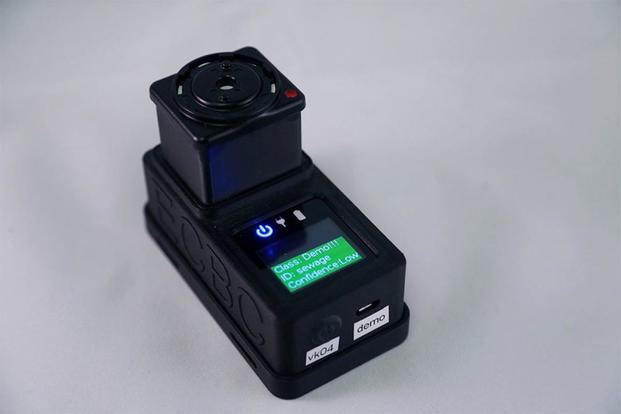U.S. Army research officials have developed a new, handheld chemical agent detector that can "taste" suspicious liquids to see if they are dangerous chemical warfare agents.
The VK3 uses a camera, a small computer and special paper colorimetric tickets for sensing chemical agents.
"We had seen and heard that those who are tasked with site exploitation -- the first people in a facility where somebody is making something -- needed tools to better identify the substances being made," said Army research biologist Aleksandr Miklos in a recent service press release. "Maybe it's perfectly legal and safe, but maybe they're doing something illicit and dangerous. The first examiner has to decide what tools to bring. We thought something like this with a colorimetric array would be helpful."
Scientists and engineers across multiple branches at the U.S. Army Research, Development and Engineering Command Edgewood Chemical Biological Center developed the VK3 to identify a chemical agent by analyzing colorimetric sensors on a paper ticket known as an assay, according to the release.
An earlier version, known as the VOCKit, identified chemicals based on vapors, a process similar to olfaction, the sense of smell.
Now, Miklos says that taste, not smell, is a better analogy, the release states.
"This started off as something that detected vapors coming off of the sample; it was very similar to how the olfactory system works," he said, noting that the device had spots that would activate in response to vapor from a sample. "By the pattern of activation, they could identify what was present. Now, we're using a ticket you add liquid to."
During the recent Chemical Biological Operational Analysis, or CBOA, the VK3 demonstrated its ability to identify chemical liquids in the field, including chemical warfare agents.
"What we were able to get was informal, verbal feedback from the assessor and from end users in the Army and civilian law enforcement," Miklos said in the release. "Feedback was positive. They liked the size and that they could carry the entire kit around in a small container. They found it easy to use."
The device delivers clear on-screen instructions with a timer, he said.
"As soon as the system initializes, the device flashes the lights and, once it's ready, it will take pictures of the ticket," Miklos said.
The VK3 differs from other detectors, such as the Joint Chemical Agent Detector, or JCAD.
"The JCAD is a continuous monitor of vapor, while this would be for explicitly looking at a puddle or a container of something," Miklos explained in the release. "This is also smaller, cheaper, and requires less power than the JCAD."
While the VK3 can currently identify multiple liquid chemicals relevant to the military, "it must be trained on those chemicals to identify them successfully," the release states.
Because of this, Miklos said different variants of the VK3 could be trained on different chemicals, as law enforcement users might have disparate needs from military users.
"It identifies what we train it against," Miklos explained in the release. "It's still a research prototype, so we've trained it against a somewhat small list of things, about 50. The list is a mixture of chemical warfare agents, as well as some common stuff like bleach, diesel and insecticides.
"It's a really cool research prototype, and now we know more about how it works," he said. "The question is going to be whether it gets more funding for advanced development. What we need is for someone to say, 'Yes, we want that.' "
-- Matthew Cox can be reached at matthew.cox@military.com.










